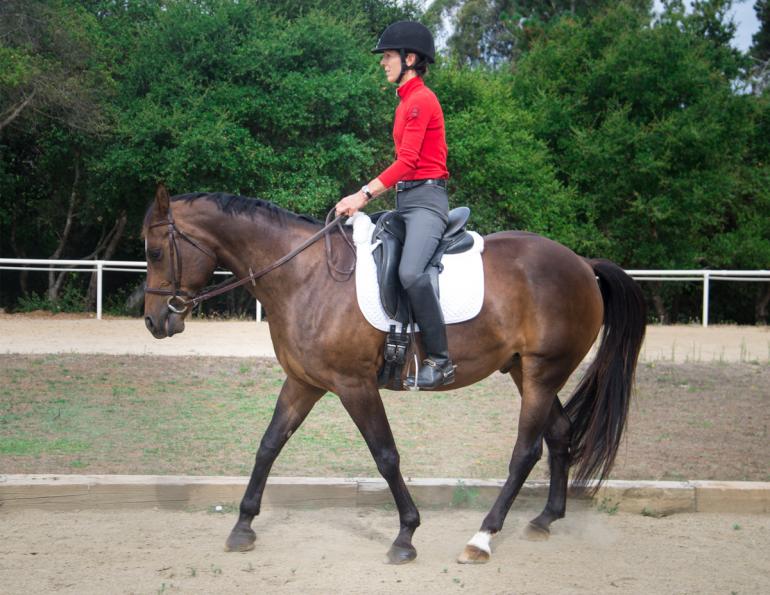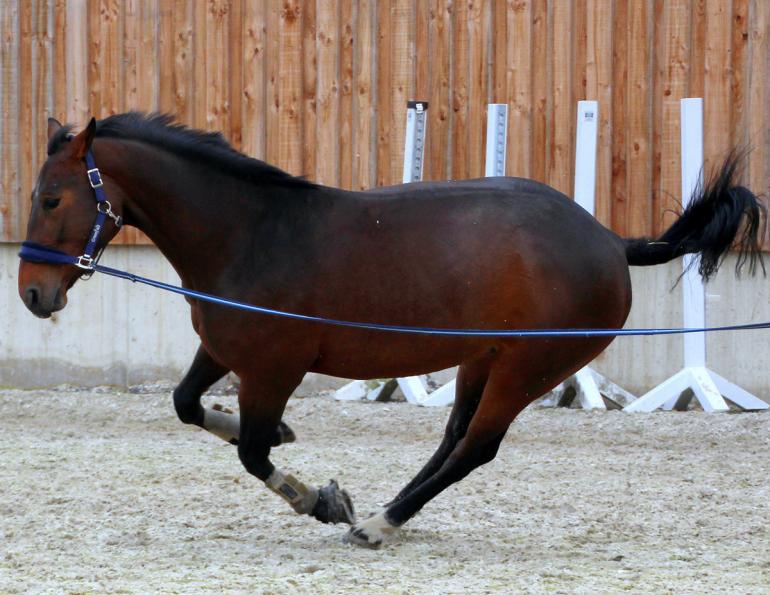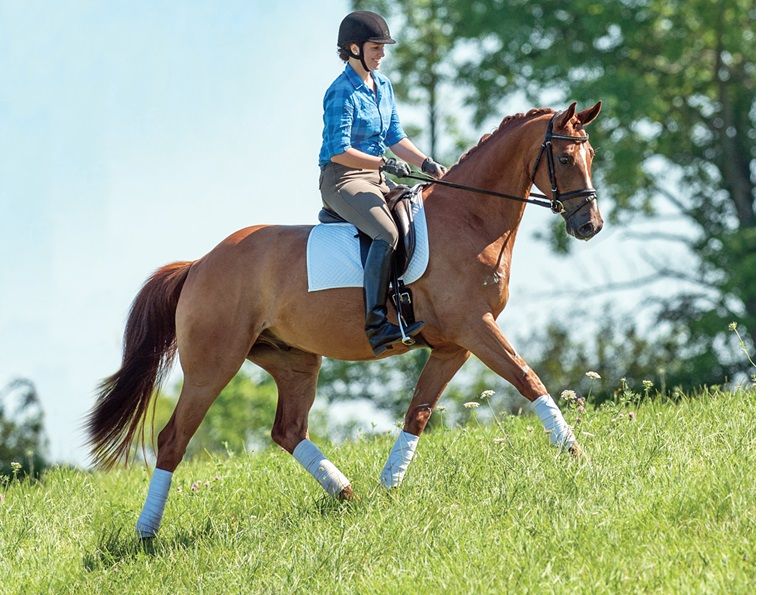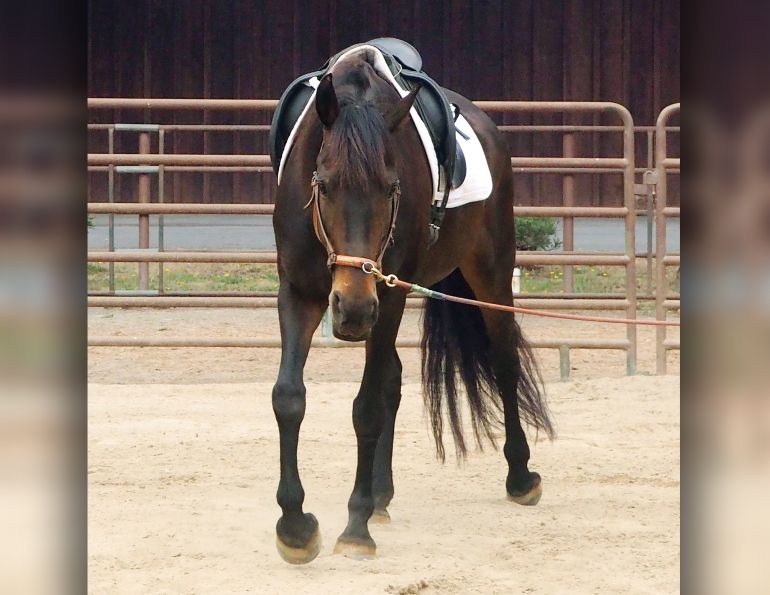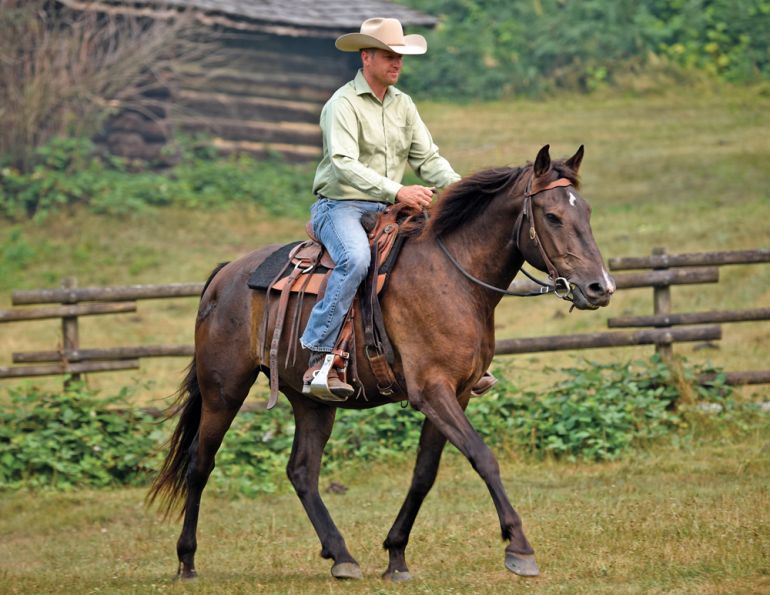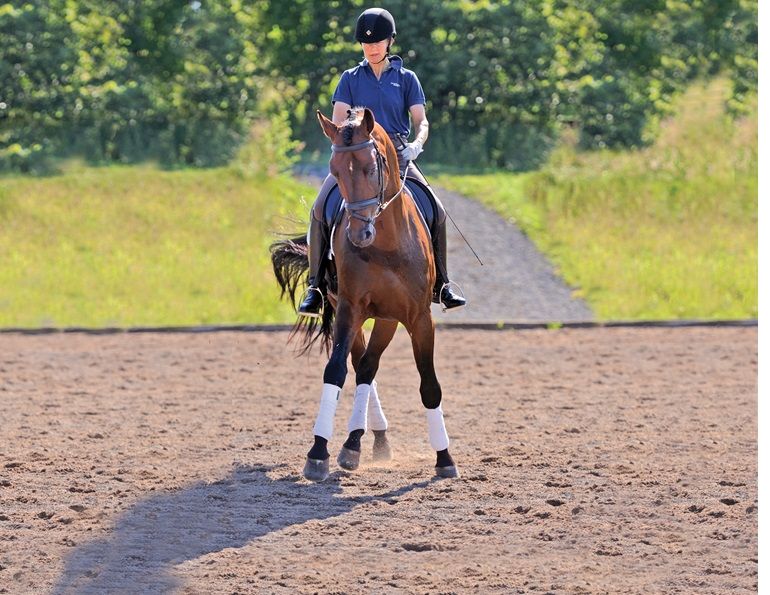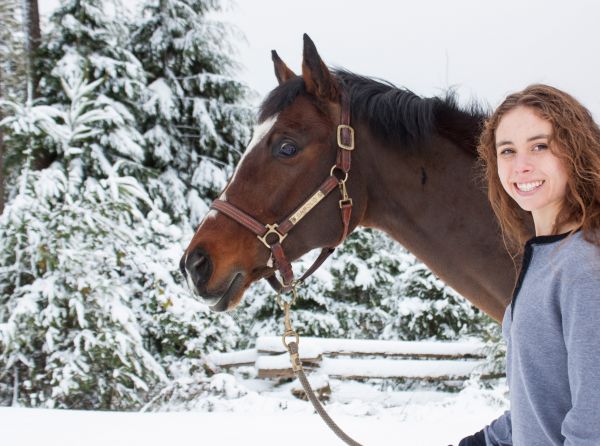By Jec A. Ballou
Many classical dressage masters from the past often praised the merits of long schooling sessions at only the walk. This kind of training refines muscle recruitment, releases tension stored in poor postural habits, and stimulates the slow-twitch fibers used for stabilizing the skeleton. In other words, there is big value in workouts at the walk. And note how I have used the term workouts, since that is how you should think of them. These are purposeful sessions, not strolls.
Because the walk does not require much physical effort on our part as riders, it is common to drift off and lose focus. Alternatively, many riders assume it is not worth saddling up if they are confined to only walking. Neither of these scenarios allows riders to reap the enormous benefits of time spent schooling the walk. Change your approach this winter. Use days of inclement weather to re-tool how you perceive these quieter workouts and just what you can accomplish.
Work at the walk is highly fruitful for educating the horse’s body, confirming postures, and loosening him. Walking allows for full contraction of the long back muscles within a pulsating and swinging motion that prevents tension. Conversely, the isometric stabilizing role played by the back when trotting can create tension patterns. Engaging in training periods without trotting, therefore, can allow for a positive change in the horse’s posture and stride.
Further, walking recruits a greater number of small postural muscles that stabilize the spine. These are the ones that create and store patterns. Recruiting these muscles develops more finely-tuned motor control through greater range of motion in limbs and joint flexion.
Even during the busiest days it is likely you can find 25 minutes to get on and ride one of the walk routines below. Really concentrate on creating the highest quality movements and figures for those 25 minutes. Treat them with the same focus as you would a dressage test or show. You can extend their benefits by dynamic stretches or calisthenics prior to mounting. These might include backing up, lateral work in hand, and bodywork techniques such as belly lifts and pelvic tucks.
If you consistently practice these 25-minute workouts at least three times per week, you will maintain a majority of tone in your horse’s postural muscle system. From a fitness standpoint, this matters more than trying to keep up cardiovascular gains.
Horses respond rapidly to cardiovascular conditioning, and when you resume your full riding schedule in the spring when the good riding weather arrives, your horse will recover this fitness within three weeks. On the other hand, the postural muscles will take upwards of three months to recover fitness if allowed to lose strength. The following workouts at the walk will help the horse maintain the strength of those postural muscles.
Below are suggestions and brief descriptions for exercise routines to fill a 25-minute session for the average horse. As a general rule, spend about two minutes on each exercise before moving to the next, and then repeat the list again from top to bottom as time allows.
Workout One: Focus on Symmetry
Poll Flexion, unmounted: Using your hands, slowly and gently swivel the horse’s head, not neck, from side to side to loosen his poll. Use small motions of about one-half inch, using your hand on the bridge of his nose.
Polish your Turns: Interspersed with intervals of active, ground-covering walking, practice several turn–on- forehands and then turn-on-haunches in each direction. Between each turn, walk forward energetically for at least 20 steps.
Proprioception Box: Arrange a box on the ground using four ground poles with the corners of the box lifted on risers. Now ride a variety of patterns over and through the box—cloverleaf, circle around each corner of the box, figure eight, etc. See how creative you can be with your figures. You can also add variation by altering the speed at which you ride this pattern.
Schaukel: From a balanced halt, back up eight strides and then ride immediately forward eight strides (see Figure 1). Repeat this forward-backward movement.
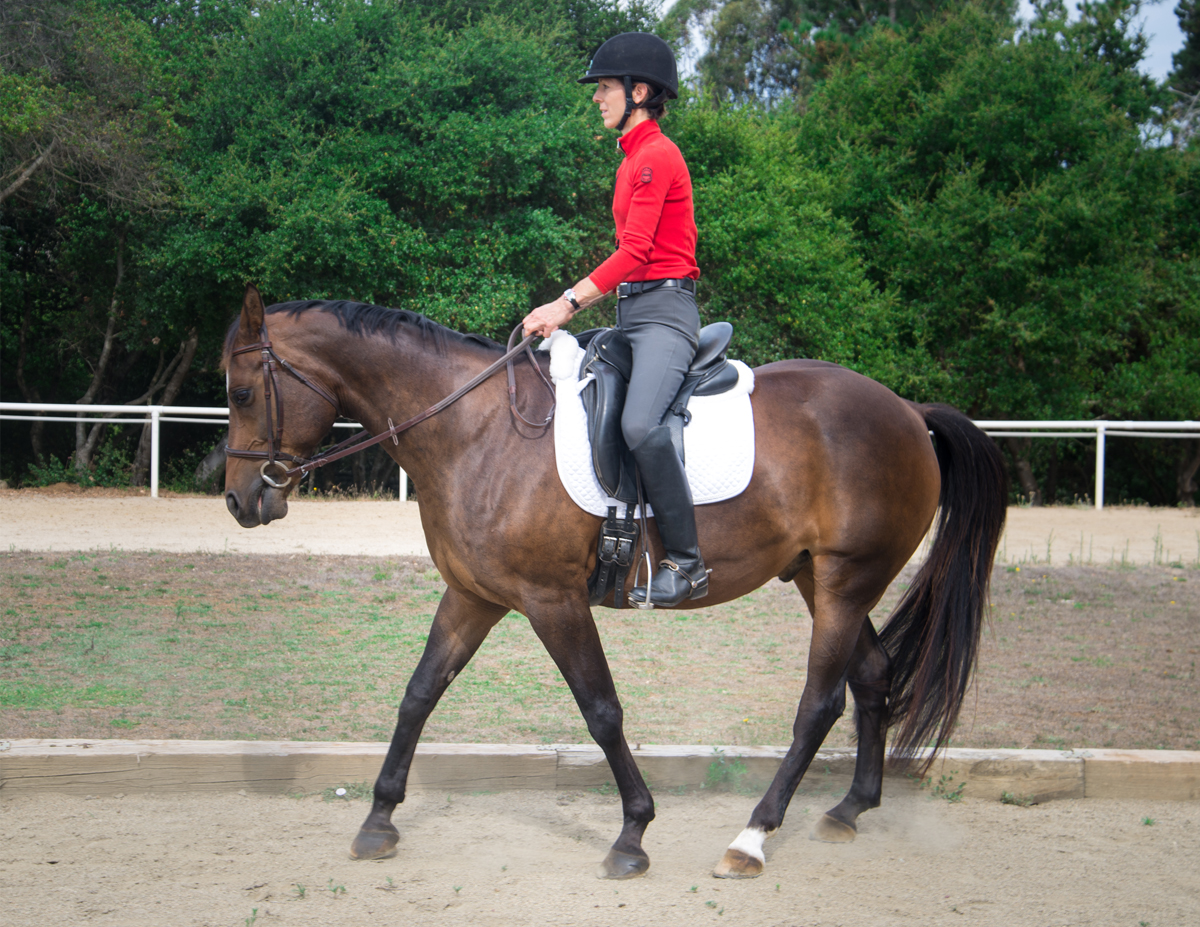
Figure 1. Photo courtesy of Jec A. Ballou.
Related: How to Format Your Horse Ride
Workout Two: Focus on Adjustability
Accordion Topline: Riding around the edge of your arena in a brisk, forward walk, practice lengthening and shortening your reins and asking your horse to change body posture from longer to shorter. Allow your horse to travel at least 40 steps in each frame before asking for the next. Be sure to keep the rhythm of his strides consistent and steady throughout your rein adjustments.
Spiral In and Out: From a 20-meter circle, spiral in to an 8-meter circle and then, maintaining inside bend, leg-yield back out to your original 20-meter circle, being careful not to lose energy (see Figure 2).
Snowman: Ride once around a 20-meter circle to the left and then, at the top, change bend and ride a 10-meter circle to the right. Then resume your 20-meter circle. Your figure should look like a snowman with a fat body and a smaller head on top.
Adjustment Poles: Set up four to five ground poles in a fan shape with the ends touching on one side. Arrange the poles so that, at their middles, they are spaced five feet apart. Now ride a small circle that crosses over the poles. Alternate riding over the narrowest distance between poles (with just a single stride between each one) and riding over the wider distance (with two strides between each one).

Figure 2. Photo courtesy of Jec A. Ballou.
Workout Three: Focus on Coordination
Speed Changes: Ride various figures in the arena while changing the speed of your walk. Aim for four distinct speeds (super slow, slow, medium, and fast), spend 20 strides at each speed (see Figure 3). Repeat.
Cornerstone Transitions: Ride transitions to the halt every ten strides. At every other halt transition, ask the horse to back up six to ten steps and then carry on.
Wavy Lines: Ride a “scalloped” edge around the track of your arena. Maintaining a brisk, lively walk tempo ride a wavy serpentine with approximately three-meter loops back and forth from left to right to left to right, and so on.
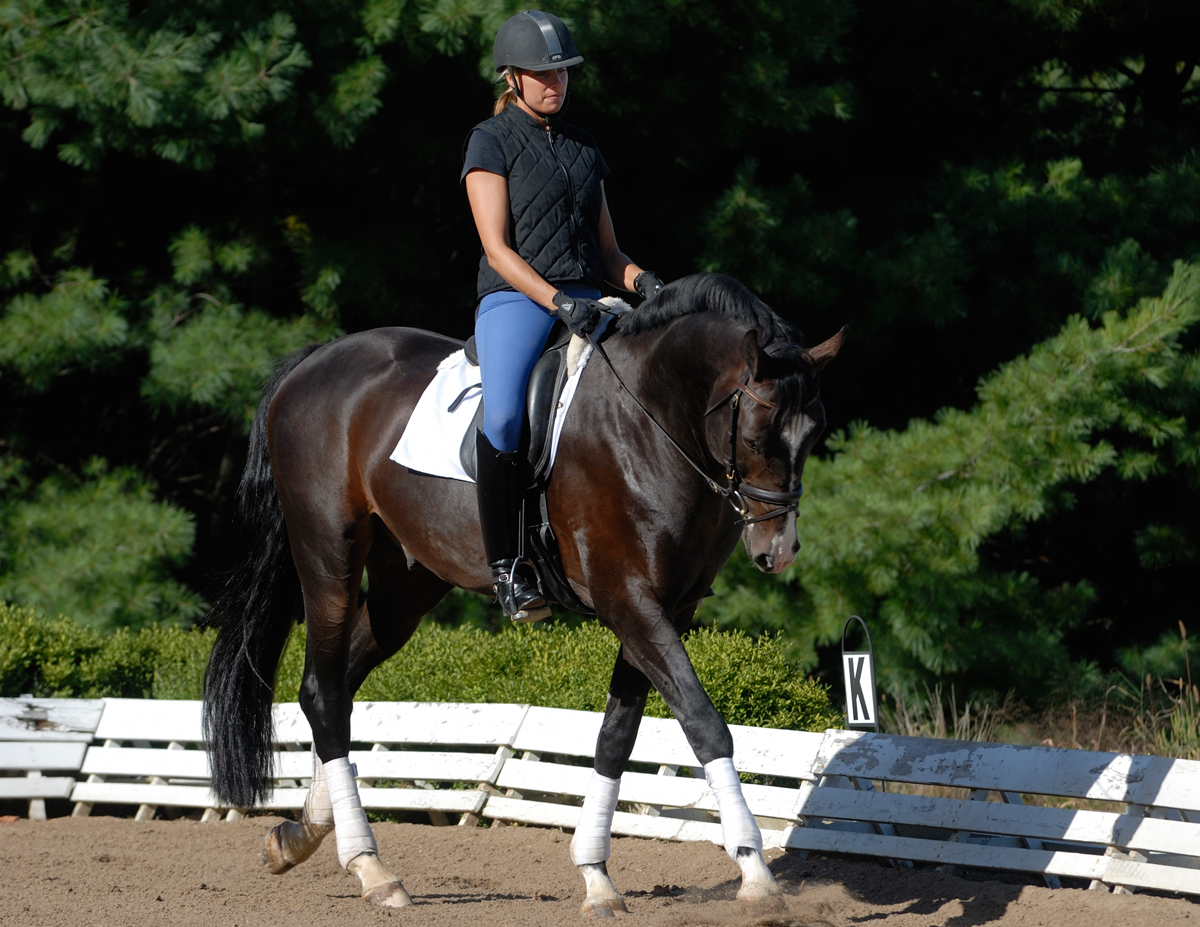
Figure 3. Photo: Clix Photography
Related: Single-Pole Exercises
Related: How to Use Hills for Horse Training
Main photo courtesy of Jec A. Ballou



